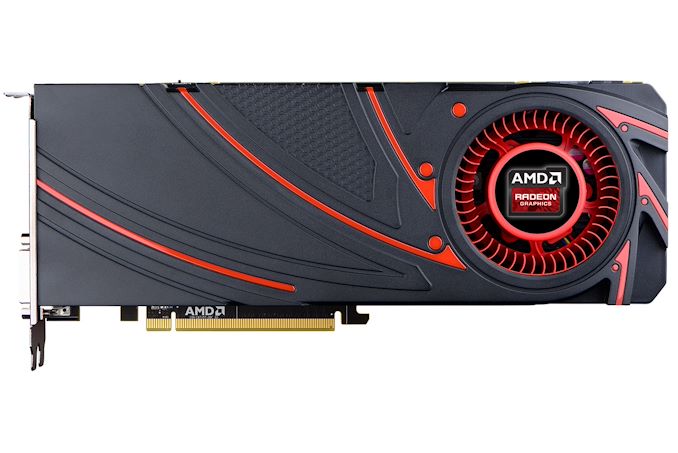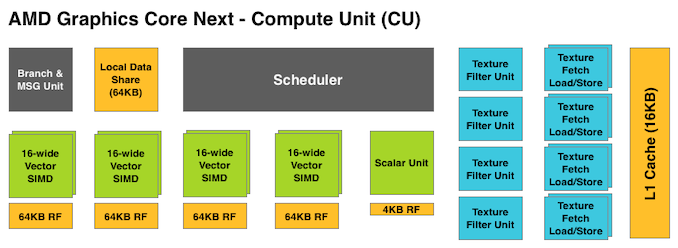AMD Moves GCN 1, 2, & 3-based GPUs and APUs To Legacy; Also Drops Win7 Support
by Ryan Smith on June 22, 2021 5:00 AM EST- Posted in
- GPUs
- AMD
- Radeon
- GCN
- Radeon HD 7000
- Radeon HD 8000
- Hawaii
- Radeon 200
- Radeon 300

Alongside today’s release of their new Radeon Software Adrenalin 21.6.1 driver – the first to bring support for FidelityFX Super Resolution tech – AMD is also using this opportunity to clean house on supported graphics products. As announced in a new blog post and effective immediately, AMD is moving all of its 1st, 2nd, and 3rd generation Graphics Core Next (GCN) based GPUs and APUs to legacy status. As a result, pre-RX 400 series video cards and pre-Ryzen APUs are no longer supported by AMD’s current drivers, and AMD’s previous 21.5.2 driver set will be the final release for those products. 21.5.2 will also be the final driver that supports Windows 7, as AMD is also using this opportunity to drop support for that already-retired OS.
This week’s change in support marks the first time since 2015 that AMD has moved any video hardware to legacy support. At the time, the company retired its pre-GCN hardware, leaving AMD’s GCN-based Radeon HD 7000 series and newer products as their support baseline. And, after nearly 10 years of support for the oldest pieces of GCN hardware – the then-revolutionary Radeon HD 7970 was launched at the very start of 2012 – AMD is finally winding down support for the first couple of waves of GCN hardware.
First introduced in 2011, GCN was a major overhaul of AMD’s graphics architecture, moving from an ILP-centric design to a more modern and compute-friendly TLP-centric design. GCN itself has since been supplanted by the RDNA family, but many of the basic design principles of GCN are still alive today in AMD’s enterprise compute-focused CDNA architecture.
As for this week’s product support changes, AMD is essentially retiring all graphics hardware – GPU and APU – that pre-dates 2016’s Polaris (GCN 4) architecture. Consequently, AMD’s lengthy legacy list includes the Radeon 7000 and 8000 series, as well as the 200, 300, and Fury series. Even a few pieces of mobile-focused M400 hardware are on there, since those low-end parts were based on older GCN chips. Overall, this marks a roughly 5-year span of hardware being retired this week, with the youngest parts just turning 5.
On the APU front, the legacy list includes several of AMD’s popular pre-Ryzen APUs, including Bristol Ridge, Carrizo, and Kaveri, which were predominantly sold under the AMD A-series moniker (e.g. A10-9700). It’s worth noting that the resulting support window for these products does end up being a bit shorter than the discrete GPUs, since AMD didn’t release their first Ryzen + Vega APUs until 2018.
| The Dearly Departed | |||
| Desktop | Mobile | ||
| AMD A-Series APUs with Radeon R4, R5, R6, or R7 Graphics | AMD A-Series PRO processors with Radeon Graphics | ||
| AMD Pro A-Series APUs with Radeon R5 or R7 Graphics | AMD FX-Series APUs with Radeon R7 Graphics | ||
| AMD Athlon Series APUs with Radeon R3 Graphics | AMD E-Series APUs with Radeon R2 Graphics | ||
| AMD Sempron Series APUs with Radeon R3 Graphics | AMD Radeon R7 M400 Series Graphics | ||
| AMD Radeon R9 Fury Series, R9 Nano Series Graphics | AMD Radeon R9 M300 Series Graphics | ||
| AMD Radeon R9 300 Series Graphics | AMD Radeon R7 M300 Series Graphics | ||
| AMD Radeon R9 200 Series Graphics | AMD Radeon R5 M300 Series Graphics | ||
| AMD Radeon R7 300 Series Graphics | AMD Radeon R9 M200 Series Graphics | ||
| AMD Radeon R7 200 Series Graphics | AMD Radeon R7 M200 Series Graphics | ||
| AMD Radeon R5 300 Series Graphics | AMD Radeon R5 M200 Series Graphics | ||
| AMD Radeon R5 200 Series Graphics | AMD Radeon HD 8500M - HD 8900M Series Graphics | ||
| AMD Radeon HD 8500 - HD 8900 Series Graphics | AMD Radeon HD 7700M - HD 7900M Series Graphics | ||
| AMD Radeon HD 7700 - HD 7900 Series Graphics | |||
As things stand, I’m not surprised to see AMD lump together GCN 1/2/3 from a driver support standpoint. Despite some very material architecture tweaks among those successive generations, from a product development standpoint they all represent one extended product family, as AMD introduced and replaced GPUs in a piecemeal fashion. Combined with the fact that AMD continued using early GCN parts in newer cards for years, it wasn’t until Polaris in 2016 that AMD finally executed a complete top-to-bottom refresh of its entire GPU product stack. In other words, GCN 1/2/3 are being retired in the same way they lived: together.
Otherwise, as previously mentioned, AMD is also using this opportunity to retire support for their last pre-Windows 10 OS. Like most other hardware vendors, AMD had opted to continue developing drivers for Windows 7 even after the OS itself was retired at the start of 2020, owing to the fact that it was still seeing significant use in some locales. But, after another 18 months of extended support, Windows 7 support is also being dropped. As of today’s 21.6.1 drivers, the only versions of Windows supported are 64-bit editions of Windows 10.
For their part, AMD’s blog post on the retirement notes that “This change enables AMD to dedicate valuable engineering resources to developing new features and enhancements for graphics products based on our latest graphics architectures.” It’s also worth noting that this announcement comes less than 2 weeks after NVIDIA’s own legacy announcement, where the company announced that the similarly aged Kepler architecture will be moved to legacy status later this summer.
Closing out support for all these legacy products then will be AMD’s 21.5.2 driver. The company has posted a fresh “legacy” version of the driver just for these retired products, though it doesn’t look like there’s anything new versus AMD’s existing drivers. According to the company, there are no further driver released planned, and the announcement makes no mention of a security update support period.
Overall, AMD’s early GCN architecture parts marked an important transition for AMD, and the resulting hardware, for all of its merits and weaknesses, kept AMD in the game during a very tough period for the company. So for GCN 1, 2, and 3, this is a retirement that’s well-earned.
Source: AMD











59 Comments
View All Comments
Threska - Friday, July 2, 2021 - link
Considering virtualization is built into the majority of CPUs the issue of running the socially approved OS is kind of moot. Pick one. Pick several. Somewhere in all that is happiness.Cooe - Tuesday, June 22, 2021 - link
Not getting FSR support on my R9 Fury X (which has MORE than enough spare compute shaders to run the upscaling algorithm) = ... -_- ... FML lol.brucethemoose - Tuesday, June 22, 2021 - link
You drew the short straw here. If Fury X definitely has enough muscle to squeak by these days... but not the driver support.kn00tcn - Thursday, June 24, 2021 - link
FSR is implemented by the game, it also was officially demoed on nvidia, so it makes no sense that driver support is requiredmake sure to try the games or utilize the upcoming code to confirm your luck
Bigos - Tuesday, June 22, 2021 - link
The so-called "GCN4" is basically equal to "GCN3" (both are gfx8). I really see no reason they are abandoning RX295/390 and Fury but leaving Polaris...Though none of that matters on Linux, which is nice.
kn00tcn - Thursday, June 24, 2021 - link
display/video engines are not the same, GCN4 also dropped hardware trueaudio, there's a chance power switching might also be different, so they are not identicalabufrejoval - Tuesday, June 22, 2021 - link
I remember AMD stopping HD7000/8000 support when Richland APUs were still being sold as new.One might argue that gaming GPUs won't need 10 years of support, but when it comes to APUs or SoCs, 10 years are minimum.
And I just fired up a Phenom II x6 system the other day, with an R290X GPU using a 512 bit bus for its 4GB of VRAM: Still a reasonable gaming rig at 1920x1080, much better than a Tiger Lake or Cezanne iGPU (albeit at 30x the Wattage...). My kids keep it as backup or for a chance visitor.
I remember it being sold as "4k ready"... 3 or 4 generations since, that still hasn't happened.
ballsystemlord - Tuesday, June 22, 2021 - link
@Ryan what about these GPUs? https://www.anandtech.com/show/14735/amd-quietly-r... They are also based on GCN, but AMD incremented the naming scheme.RaV[666] - Tuesday, June 22, 2021 - link
Lol i didnt even know they did this. Yea, its gonna be a problem for them.But i guess they scrapped them also.Ryan Smith - Tuesday, June 22, 2021 - link
I don't have the device IDs to fully confirm this, but looking at AMD's driver INF, it would seem the pre-GCN 4 members of the 600 series have also been dropped.